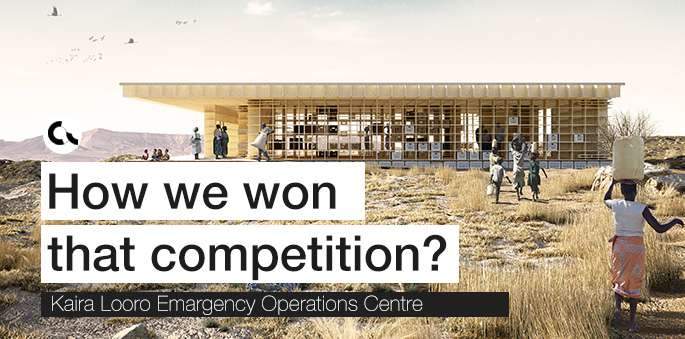
BaneGarden

For more architectural news



For more architectural news
If you found this article valuable, consider sharing it
Arab Architecture – Architectural Publishing Team
Arab Architecture is ArchUp’s dedicated editorial team focused on publishing high-quality content about contemporary architecture, urban design, and regional architectural developments. The team curates and reports on significant projects, design concepts, and influential movements shaping the architectural landscape in the Arab world and beyond.
Explore their latest architectural coverage here: ArchUp Architecture Section
Studio Gang is on track to complete the University of Chicago’s John W. Boyer Center in Paris by October. The school’s new international outpost sits in the 13th Arrondissement along the Avenue de France, a cavernous main artery whose mixed-use…
Saesoldong House I / JYJ Architects © Cheon Youngtaek + 35 Share Share Facebook Twitter Mail Pinterest Whatsapp Or https://www.archdaily.com/990331/saesoldong-house-i-jyj-architects Area Area of this architecture project Area : 311 m² Year Completion year of this architecture project Year : 2022…
James Merrell Architects together with interior design firm Ellen Hanson Designs, completed a modern mountain home in Sun Valley, Idaho, that features an exterior of oiled steel, concrete, and glass. The sheet metal skin of oiled steel was selected for…

With this text we are starting new series of arcticles on Competitions.archi. We will be showcasing the case studies of the projects that were awarded in various architecture competitions. The main focus of this series is to understand the design…

Building a circular art center spiraling towards the Heibei Mountains by SYN Architects, Design studio SYN Architects submitted an architecture design for an art center that combines different geometric volumes, featuring a circular structure that spirals into another rectangular structure…
Necessity is the mother of invention. Pressure creates diamonds. (Insert your favourite saying about innovation here.) Whichever way you slice it, there’s a lot happening right now in the world and, ergo, a lot of required change. Adapt or die…
Studio Gang is on track to complete the University of Chicago’s John W. Boyer Center in Paris by October. The school’s new international outpost sits in the 13th Arrondissement along the Avenue de France, a cavernous main artery whose mixed-use…
Saesoldong House I / JYJ Architects © Cheon Youngtaek + 35 Share Share Facebook Twitter Mail Pinterest Whatsapp Or https://www.archdaily.com/990331/saesoldong-house-i-jyj-architects Area Area of this architecture project Area : 311 m² Year Completion year of this architecture project Year : 2022…
James Merrell Architects together with interior design firm Ellen Hanson Designs, completed a modern mountain home in Sun Valley, Idaho, that features an exterior of oiled steel, concrete, and glass. The sheet metal skin of oiled steel was selected for…

With this text we are starting new series of arcticles on Competitions.archi. We will be showcasing the case studies of the projects that were awarded in various architecture competitions. The main focus of this series is to understand the design…

Building a circular art center spiraling towards the Heibei Mountains by SYN Architects, Design studio SYN Architects submitted an architecture design for an art center that combines different geometric volumes, featuring a circular structure that spirals into another rectangular structure…
Necessity is the mother of invention. Pressure creates diamonds. (Insert your favourite saying about innovation here.) Whichever way you slice it, there’s a lot happening right now in the world and, ergo, a lot of required change. Adapt or die…
Studio Gang is on track to complete the University of Chicago’s John W. Boyer Center in Paris by October. The school’s new international outpost sits in the 13th Arrondissement along the Avenue de France, a cavernous main artery whose mixed-use…
Saesoldong House I / JYJ Architects © Cheon Youngtaek + 35 Share Share Facebook Twitter Mail Pinterest Whatsapp Or https://www.archdaily.com/990331/saesoldong-house-i-jyj-architects Area Area of this architecture project Area : 311 m² Year Completion year of this architecture project Year : 2022…
James Merrell Architects together with interior design firm Ellen Hanson Designs, completed a modern mountain home in Sun Valley, Idaho, that features an exterior of oiled steel, concrete, and glass. The sheet metal skin of oiled steel was selected for…

With this text we are starting new series of arcticles on Competitions.archi. We will be showcasing the case studies of the projects that were awarded in various architecture competitions. The main focus of this series is to understand the design…

Building a circular art center spiraling towards the Heibei Mountains by SYN Architects, Design studio SYN Architects submitted an architecture design for an art center that combines different geometric volumes, featuring a circular structure that spirals into another rectangular structure…
Necessity is the mother of invention. Pressure creates diamonds. (Insert your favourite saying about innovation here.) Whichever way you slice it, there’s a lot happening right now in the world and, ergo, a lot of required change. Adapt or die…